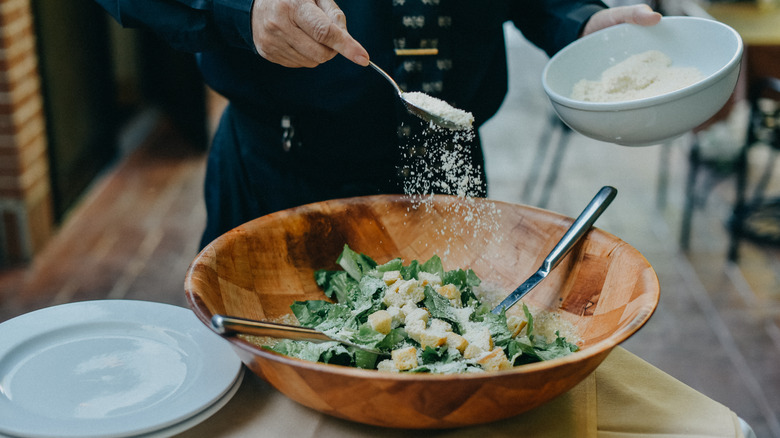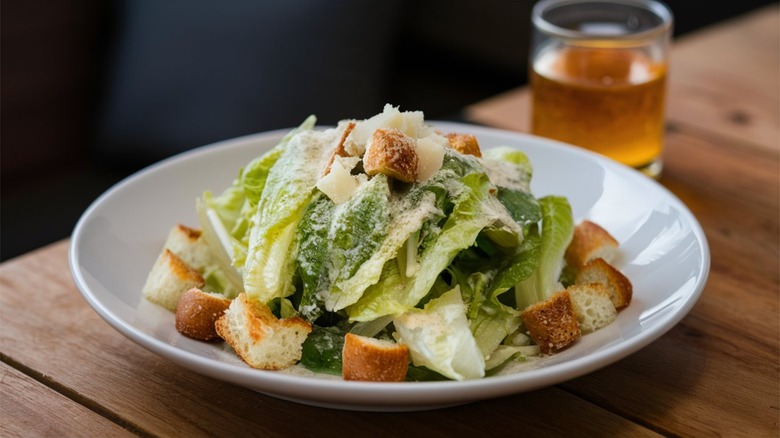Why Does Restaurant Caesar Dressing Taste So Much Better Than Store-Bought?
Classic Caesar salad may look less colorful and busy than a regular house salad, but it packs a wallop of tangy, creamy, umami (not salty!) flavor you don't find in other salads. A Caesar typically contains only romaine lettuce, Parmesan cheese, croutons, and the eponymous dressing — a simple lineup. Obviously, the dressing is where the flavor lives in a Caesar, but if you've ever bought a bottle of it at the store hoping to replicate the intense, savory experience you got at a restaurant, you've probably been disappointed.
One of the undeniable facts about Caesar salad is that restaurant Caesar dressing typically just tastes better than store-bought versions, and there are several reasons for this. For one, restaurants usually make it from scratch with fresh ingredients, and this tends to provide brighter bursts of flavors than pre-packaged components. While bottled dressing may have been made with ingredients that were fresh at the time, it's designed to be shelf-stable for months, and it's anyone's guess how old it is by the time it hits your fridge. That's not to say store-bought dressing is bad, but it certainly lacks the zest of its freshly made counterpart.
"Real" Caesar dressing also contains quite a few more ingredients than you may expect. In a classic recipe, you'll find garlic cloves, lemon juice, Worcestershire sauce, olive oil, Dijon mustard, raw egg yolks, anchovies, and sometimes red wine vinegar. These ingredients often don't find their way into bottled dressing, and your taste buds can tell.
Tips for making restaurant-style Caesar dressing
If you're planning a dinner of traditional Italian recipes (or anything, really) and want a show-stopping Caesar to pave the way for the main course, there are a few ways to get there. First, ensure you incorporate all the key ingredients. Each component plays a part in the final product, and omissions are noticeable when you're dealing with a basic yet complexly flavored concoction. Anchovies are often the first cut, but we advocate for their inclusion. Though not an ingredient in the original salad produced by Caesar Cardini, these tiny fish, when ground into a paste, provide a large part of the briny savoriness many are looking for when they order a Caesar. (Another contributor is Worcestershire sauce, which happens to contain fermented anchovies.) Substitute capers if you absolutely cannot do the fish, but try to do the fish!
The technique is also important when making restaurant-quality Caesar salad at home. Rather than mixing everything together all at once, ensure that the olive oil emulsifies properly by slowly introducing it to the rest of the ingredients while whisking them vigorously. This will create the creamy, velvety texture you'd get in a restaurant.
Try making the salad at the table right in front of your guests; this is often how it's served in the best eateries, and showmanship goes a long way. To solidify that restaurant experience, serve your Caesar alongside Sauvignon Blanc or Riesling, refreshing white wines with citrusy notes. Their acidity enhances the flavors you'll have coaxed out with your quality ingredients and impeccable technique!

